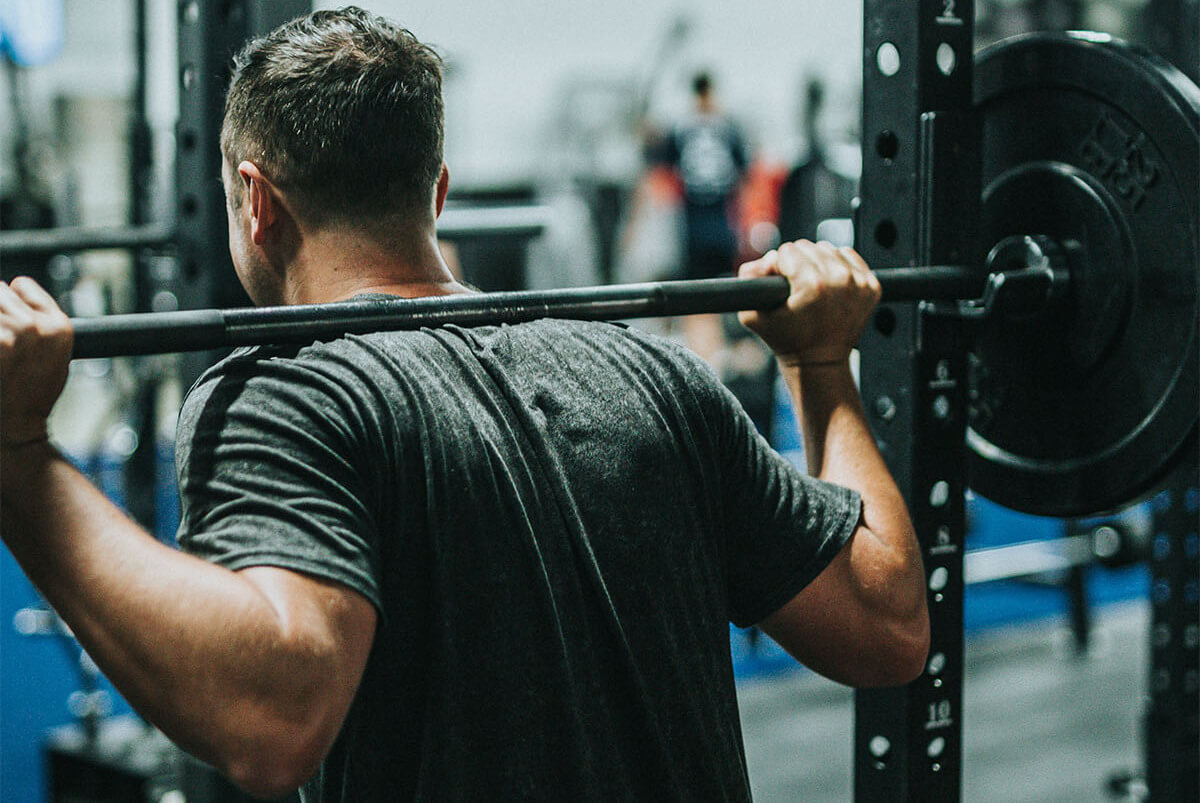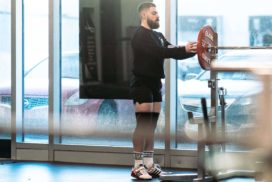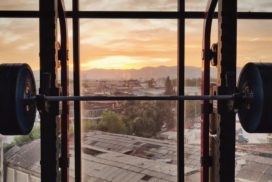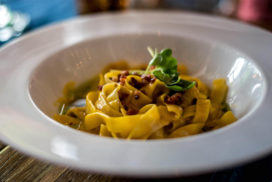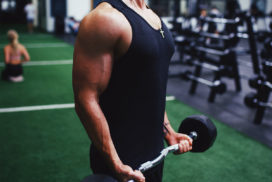Workouts are generally sorted into push, pull, and legs. Push workouts activate the chest, shoulders, and triceps using the bench press, shoulder press, and a tricep isolation exercise. Pull workouts activate the back, traps, rear delts, and biceps using the deadlift, row, and a bicep isolation exercise. And leg workouts activate the quads, hamstrings, glutes, and calves using the squat, leg extension, leg curl, and calf raise. Of course, there are other exercises to hit all these muscles but these are the standard movements.
To hit legs, squats are the most effective compound movement and are a staple in most, if not all bodybuilding and powerlifting programs.
The three main variations of the squat are back squats, goblet squats, and front squats. Back squats are squats using a barbell on your back, goblet squats are squats done with a dumbbell held up in front of you at chest-level, and front squats are done with a barbell in front of you resting on your shoulders.
These different squat variations all have their own benefits and different people may find one variation to work better for them than the others.
The Benefits of Back Squats
Among all squat variations, back squats are usually considered the best for building the overall legs. Compared with front squats, back squats are better at stimulating the hamstrings and glutes, and allow you to squat more weight.
Because back squats allow you to squat heavier, they are often favored by powerlifters.
The negatives of back squats are that they are the hardest on your knees and ankles, and require the most mobility to maintain correct form.
Back Squat Form
There are 2 main ways of doing back squats. There are high bar back squats and low bar back squats.
High bar back squats will help target the quadriceps since the bar is directly above the feet. Doing high bar squats requires more ankle and knee mobility and can lead to joint pain for some, especially those who lack range of motion in the ankles and flare the knees to get more depth.
Low bar back squats, conversely, help target the glutes and are easier on the knees and ankles. Most people are able to lift more weight when doing low bar back squats and find that their control of the movement is higher. Both variations of the back squat are below and can be clicked on for a technique demonstration.
The Benefits of Goblet Squats
A second variation of squats is the goblet squat. Goblet squats differ from back squats in many ways. The advantages of back squats are more emphasis on the glutes and hamstrings and the ability to lift more weight while the benefits of goblet squats are that they emphasize the quadriceps and require less weight for hypertrophic activation.
The benefits of goblet squats are that they do not require a squat rack, barbell, and plates, and they activate the core and quadriceps.
Goblet Squat Form
To execute goblet squats you should use a dumbbell slightly heavier than the ones you use for doing dumbbell bench press. If you are unsure of what weight to use, just start with 20-30 pounds, work on form, then increase the weight over time.
The goblet squat is done by gripping a dumbbell with your arms bent so that the weight is against your upper chest. Keep your back straight while doing these and try to go below parallel (legs parallel to the ground) every rep. You can click below to see a visual on the form.
The Benefits of Front Squats
Finally, front squats are a third common variation of squats. Front squats are the preferred squat variation by many bodybuilders because they demand less overall mobility and target the quadriceps.
One of the largest benefits of front squats is that they place less stress on the spine and joints. Knee and hip problems are much more likely to result from back squats than they are from front squats.
Front squats also require more core strength to stabilize the weight. This develops the anterior chain and carries over into other lifts like deadlifts and pull-ups. By forcing you to use your abs during front squats, you will attain a stronger core, whereas when doing back squats, the lower back is more activated.
Another benefit of front squats is that it is easier to achieve a fuller ROM (range of motion) during squatting because the weight naturally stays above your feet which forces you deeper. This means you can do higher quality reps without needing highly developed mobility.
Front Squat Form
Front squats can be done with different grips. There are 3 grips commonly used to do squat squats: olympic grip (also called powerlifting grip or clean grip), modified olympic grip with straps, and cross grip.
Among these different grip variations, the olympic grip is the most effective for keeping good form and doing the movement correctly. If you are unable to do an olympic grip then you can use straps to substitute for wrist mobility. The cross grip can also be used but there is a higher chance of the weight falling at the bottom of the lift and you may be limited in your control of the movement. These 3 front squat grips can be watched below to see the correct form.
Summary
For most weightlifters, front squats are the best squat variation. This is because front squats require less mobility, are less damaging to the joints, help squat with more depth, and activate the quadriceps more fully compared to other ways of squatting.
Aside from mobility and joint impact, back squats and front squats have been found to be mostly equal in overall muscle activation. The squat variation you use should depend on what muscle group you need to develop the most. Both front squats and back squats work all muscles in the leg but back squats target the hamstrings and glutes better and front squats target the quadriceps more. If your hamstrings and glutes are lagging, you can do more back squats to even out your lower body.
Goblet squats can also be used to supplement front squats if you don’t have access to a squat rack or prefer to squat at higher reps with lower weight.
For more on training, such as the differences between the upper and lower abs and how to start lifting after time off, click here.

